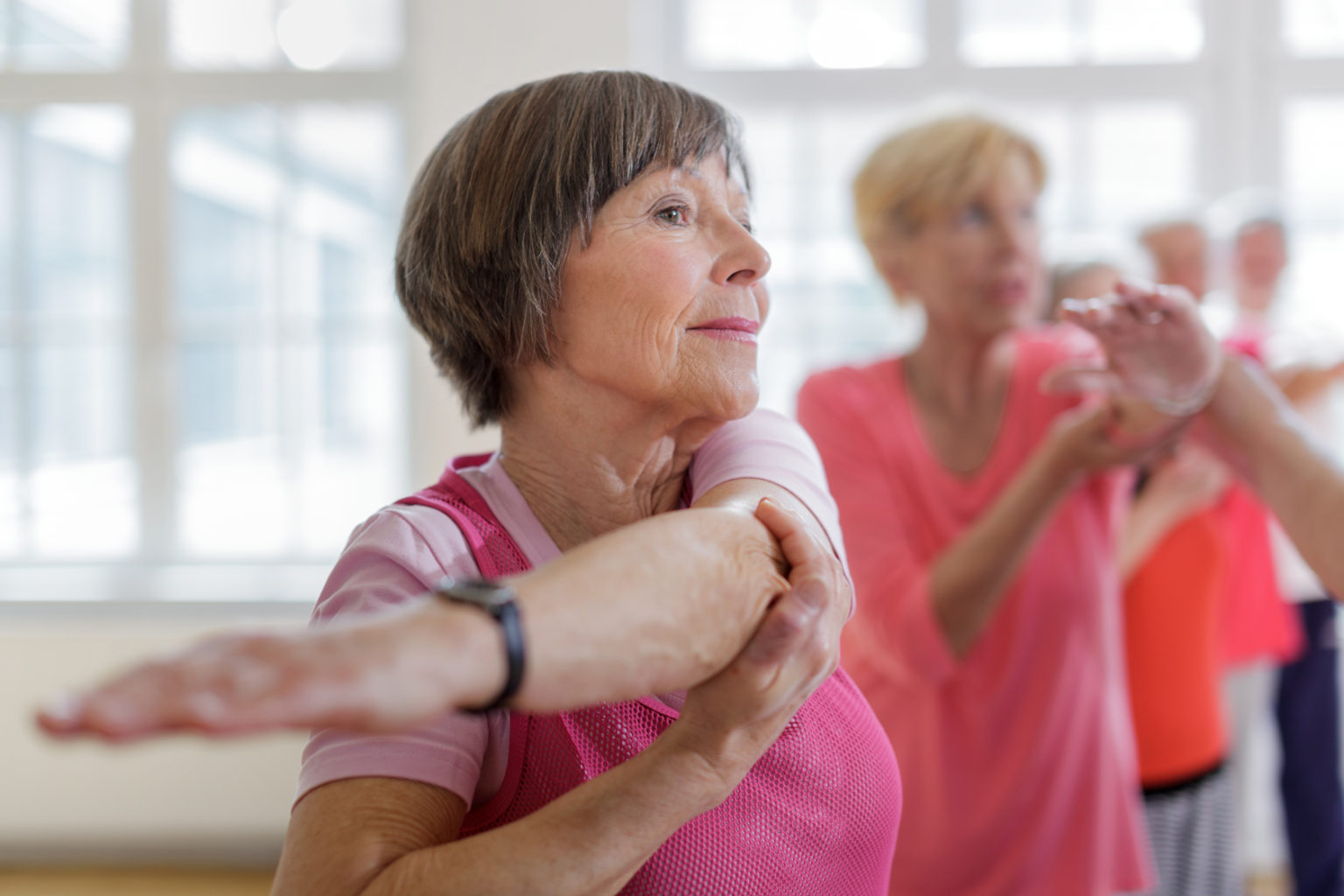The Benefit of Stretching: It’s More Than You Thought

Most of us know we should do some stretches before exercising. Some people begin their routine by holding a series of poses; others use specific movements that stretch the muscles. Stretching helps warm up our muscles and limber our joints so we’ll be less likely to injure ourselves during our workout. Stretching after an exercise session is also advised, to prevent soreness and stiffness as we cool down.
Most of us have traditionally thought of stretching as something to do before the main event—aerobic exercise that gets our heart beating faster, and muscle strengthening activities that build muscle mass. But stretching really isn’t an afterthought. It should be a part of every senior exercise program. Stretching the ligaments and joints improves flexibility and reduces the risk of injury and falls. When our ligaments are not stretched regularly, they shorten. But for many people, an appropriate stretching program can bring back flexibility they thought was lost.
And that’s only the beginning. An April 2018 study published by The Physiological Society shows that there’s much more benefit to be gained from stretching, especially for seniors with disabilities. A team made up of researchers from Florida State University, Kansas State University and the University of Electro-Communications in Tokyo found that a program of stretching could increase blood flow to the muscles of the lower legs, even increasing the number of capillaries.
The researchers reported, “This suggests that for individuals with limited mobility, regular muscular stretching could improve blood flow to muscles. This has particularly important implications for elderly people with lower leg problems for whom walking is difficult due to pain or lack of mobility.”
They added, “Patients with peripheral artery disease and patients with foot or leg problems related to conditions such as diabetes might be able to use muscular stretching to improve blood flow to their lower limbs and increase or regain walking function.”
This is good news, because seniors with these types of mobility-limiting conditions often hesitate to take part in exercise, fearing it will be difficult or painful. Said Dr. Judy Muller-Delp of Florida State University College of Medicine, “Our research suggests that static muscle stretching performed regularly can have a real impact. Even individuals who struggle to walk due to pain or lack of mobility can undertake activity to possibly improve their health.”
There’s an exercise program that’s right for almost every older adult. Talk to your doctor about a plan that includes aerobic activities, muscle strengthening and balance building — and don’t forget the stretches!
Source: IlluminAge AgeWise reporting on a study from The Physiological Society (www.physoc.org)
![Health Concepts [logo]](https://healthconceptsltd.com/wp-content/themes/healthconcepts-corporate/images/logo.png)
